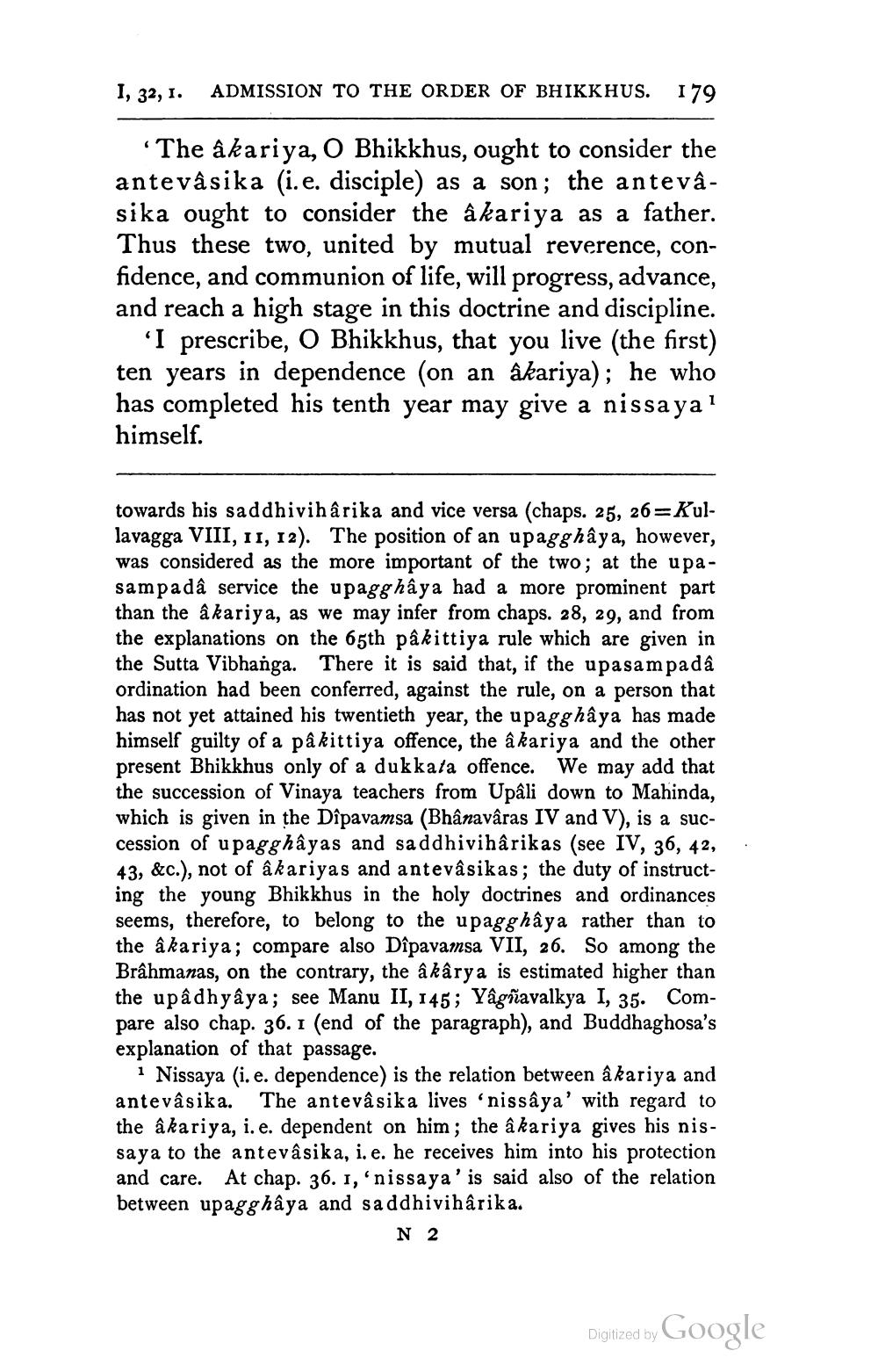________________
I, 32, I. ADMISSION TO THE ORDER OF BHIKKHUS. 179
The âkariya, O Bhikkhus, ought to consider the antevâsika (i.e. disciple) as a son; the antevâsika ought to consider the âkariya as a father. Thus these two, united by mutual reverence, confidence, and communion of life, will progress, advance, and reach a high stage in this doctrine and discipline.
'I prescribe, O Bhikkhus, that you live (the first) ten years in dependence (on an âkariya); he who has completed his tenth year may give a nissa ya1 himself.
(
towards his saddhivihârika and vice versa (chaps. 25, 26-Kullavagga VIII, 11, 12). The position of an upagghâya, however, was considered as the more important of the two; at the upasampadâ service the upagg hâya had a more prominent part than the âkariya, as we may infer from chaps. 28, 29, and from the explanations on the 65th pâkittiya rule which are given in the Sutta Vibhanga. There it is said that, if the upasampadâ ordination had been conferred, against the rule, on a person that has not yet attained his twentieth year, the upagg hâya has made himself guilty of a pâkittiya offence, the âkariya and the other present Bhikkhus only of a dukkata offence. We may add that the succession of Vinaya teachers from Upâli down to Mahinda, which is given in the Dîpavamsa (Bhânavâras IV and V), is a succession of upagghâyas and saddhivihârikas (see IV, 36, 42, 43, &c.), not of âkariyas and antevâsikas; the duty of instructing the young Bhikkhus in the holy doctrines and ordinances seems, therefore, to belong to the upagg hâya rather than to the âkariya; compare also Dîpavamsa VII, 26. So among the Brahmanas, on the contrary, the â kârya is estimated higher than the upâdhyâya; see Manu II, 145; Yâgñavalkya I, 35. Compare also chap. 36. 1 (end of the paragraph), and Buddhaghosa's explanation of that passage.
1 Nissaya (i. e. dependence) is the relation between âkariya and antevâsika. The antevâsika lives 'nissâya' with regard to the âkariya, i. e. dependent on him; the âkariya gives his nissaya to the antevâsika, i. e. he receives him into his protection and care. At chap. 36. 1, 'nissaya' is said also of the relation between upagg hâya and saddhivihârika.
N 2
Digitized by Google




